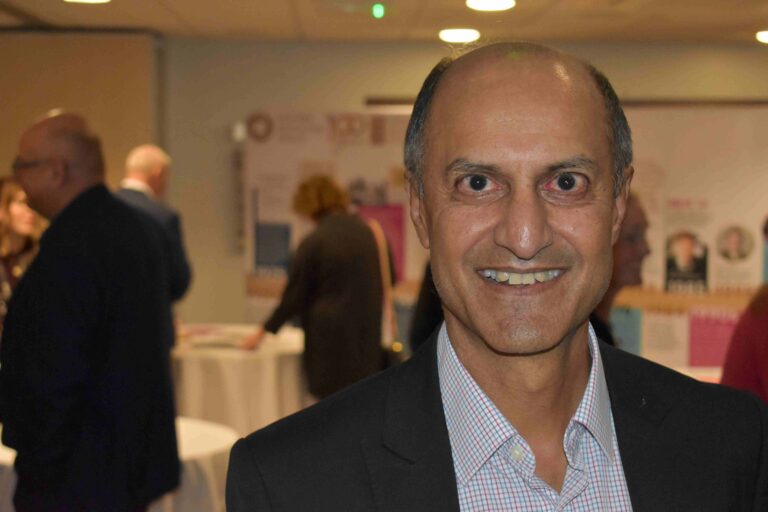David joined West Suffolk College in 1993 when they were becoming independent of the Suffolk County Council, which was a key moment in the College’s history. The College’s sound financial footing was largely down to David in his role of Head of Finance and later Deputy Principal. Working under four Principals over 22 years, David has overseen some of the key infrastructure developments of the College and has happy memories of his time there.
What was your earliest involvement with Eastern Education Group?
I joined West Suffolk College in February 1993, just prior to incorporation (when the College become independent) in March of that year. This was under the Principal Shipston, who was a leading figure in establishing WSC as a community college, independent of the County Council; he was a strong advocate of FE and oversaw and supported the early work of the Training and Enterprise Council in providing work-based training in Bury St Edmunds.
This was a new post as Head of Finance. Prior to incorporation, the college had been allocated money to spend each year by Suffolk County Council, but the College had no control over its income. Post incorporation, the College would be paid by results and had to manage its own finances, which required a new finance team and an experienced finance professional.
I had never intended to stay in FE, but after 22 years, progression to Deputy Principal and having worked under four Principals, I look back on a very happy and rewarding career in Further Education.
Key dates
- 1993 – Head of Finance
- 1995 – Director of Finance
- 2005 – Deputy Principal
My initial challenge was to set up and embed a finance system and create a team from some excellent staff, but none of whom had a finance background. The second challenge was to change the culture of financial management from making sure every penny of the budget was spent by the end of the financial year to one of managing resources as effectively as we could. This was achieved by delegating budgets to heads of Faculty or School and working with them to ensure that they got best value for money. Richard Stewart (Chair of Governors) advocated appointing a Purchasing Manager and Julia Moore took on that role and her place in the subsequent development of the College facilities is legendary.
Management of income was a major challenge. The first funding model used by the FEFC (Further Education Funding Council) was to pay Colleges a year in arrears. We would receive an allocation of say 1500 full time students at £2000 per head. If we enrolled 2000, we did not get paid for the extra £500, but in the following year we would start with an allocation of 2000 full time students at £2000 or maybe a bit more. There was similar formula for part time students. We therefore had to fund provision for 2000 students in year one on an income of 1500 at £2000.
In addition, there was a very little capital funding allocation, so management ambitions to develop the college building were difficult to fund. Fortunately, recruitment of full-time students each year was successful and, in my time, grew from under 1000 to over 3000.
Delivery to many students for whom we had not been paid was achieved by management of class sizes. Many of the teaching staff found this challenging but classes need to be at least 20 to be financially viable and if we had 25 applications that had to be managed carefully. In 1992/3, the College’s income had only exceeded its expenditure by £30,000, By the end of the decade, the income has increased by at least 100% and the surplus was approaching £1m.
At this point, the European funding generated through Elizabeth Bray’s efforts needs to be mentioned (£3m in its best year) and the growth in work-based learning provision, firstly led by Mike Dean and Andrew Hunter and latterly by Martyn Wagner.
The adult education programme headed by Peter Dudley and assisted by Mary Taylor managed a programme with over 10,000 students spread across various out stations in the county. Sadly, this programme has declined over the years primarily due to subsidies from local government.
Higher Education provision at the College had had a low profile but this also continued to grow, at one time appointing an agent to recruit in China, adding to the growth in income.
All this growth and tight financial management provided the funds and the ability to access loan funding, to progress the many facilities developments that have been mentioned throughout these voices.
New roles
After a few years, my role expanded to include facilities management, IT and Management information.
Management information
The management information unit, MIU, as it was called, grew in significance as the funding model developed from counting heads, to measuring retention and eventually achievement. Again, if we enrolled a student and they didn’t stay for 4 months, we didn’t get paid and if they didn’t achieve, we received less funding. By 2015, we had over a dozen staff just measuring student numbers and achievement.
Facilities management
In a campus that is open from 8am to 10pm Mon – Friday and Saturday mornings, facilities management can be a challenge, and this was the lot of the caretaking team. Ever complaining and ever willing, the College would not have functioned without them, thankfully a lot of staff recognised and appreciated this.
Information technology
The Millennium bug, with the benefit of hindsight, may have been a media scam, but it did allow us to make a case for re-equipping the whole college with new computers in 1999. Led by Peter Green and Scott Gerber, they upgraded and installed some 300 computers in a few months and set the standard of outstanding IT facilities which has continued to grow in the College.
Building development
Our ability to manage our finances meant that commercial lenders would help finance the building projects, as capital grants from the Learning and Skills Council were difficult to achieve and would only part-fund projects. Project management was also our responsibility to deliver on time and on budget.
Projects for which I was responsible included:
- Leonardo House
- Anglian Lane Construction Training Centre (precursor of the Milburn Centre)
- Minden House
- Gibraltar restaurant
- Suffolk House Theatre
- Suffolk House renovation – facade etc
- Milburn Centre
- The Gateway
- Acquisition of the Vinten Building for the STEM centre
My role was to get the finance and grants, get approvals, appoint a contractor and all day-to-day management was overseen by Julia Moore. (and I was responsible if it all went wrong!)
What are your standout memories of your time with us?
The reason that I stayed in FE was due Nick Foster’s inspirational vision for FE. I was a product of FE and that touched me, in addition the many examples of how FE and HE have changed lives of WSC students I still find very uplifting.
In the early days working with Nick, Ann Williams, Phil Thirkettle, Mick Fell and Andrew Hunter were very enjoyable and rewarding.
The work we all did to improve facilities with the support of the Governors and all my four Principals, is something that I will remember with a great sense of achievement.
Are there any family members who have connections to EEG?
Like many of the staff, both of my children have worked on enrolment over the years, one has been a part-time lecturer and one is currently working with EEG.
Is there a message you would like to share as we celebrate our 100 years of history?
WSC was formed to develop skills of the work force in the 1920s at a time when funding was not available for working class men (predominantly) to upskill and improve their lives. Let’s not forget that opportunities now are so much greater than at the birth of the College.
Lastly, do you have any advice for future students and staff at EEG?
I left school at 16 with a few O levels but was motivated to pursue a very successful career in finance, this opened many doors and opportunities to use skills that I hadn’t known that I possessed. Never underestimate what you can achieve – if you don’t try, you will never know.




